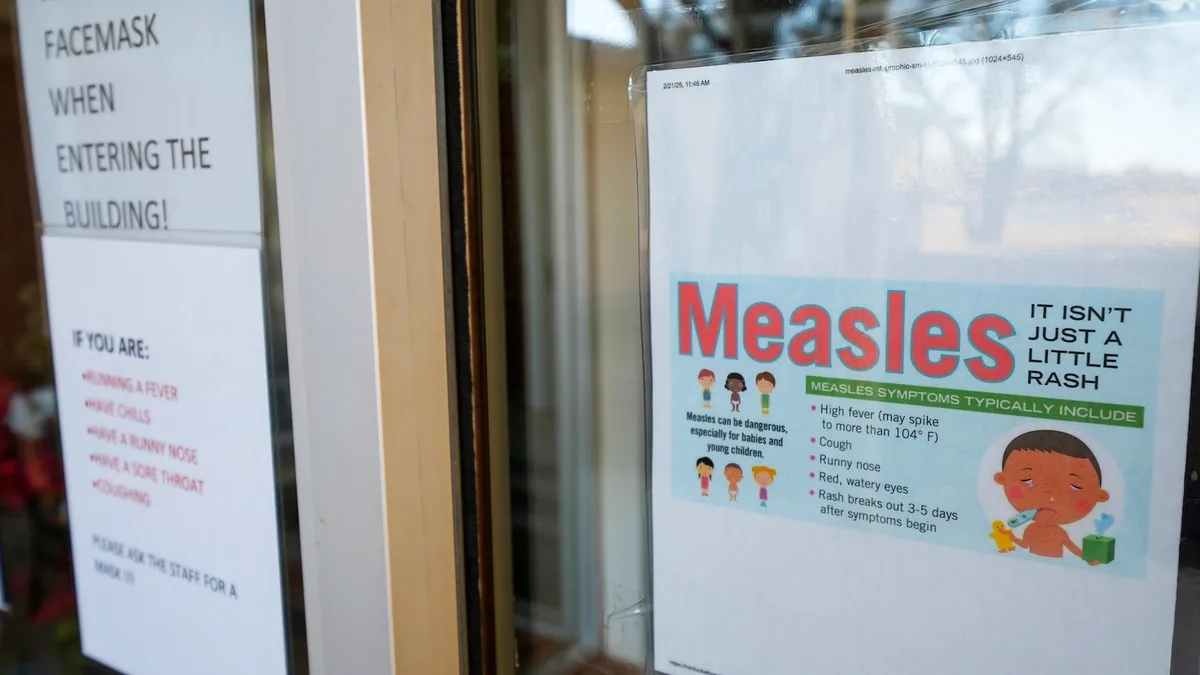
According to new federal data released on Wednesday, measles cases in the United States have surged to their highest number in more than three decades. The Centers for Disease Control and Prevention (CDC) reports a staggering 1,288 confirmed measles cases across 38 states, a significant increase from the 285 cases recorded throughout all of last year. This unprecedented rise marks the highest number of cases since 1992, surpassing the previous high of 1,274 cases reported in 2019.
Dr. Peter Hotez, a professor of pediatrics and molecular virology at Baylor College of Medicine in Houston, expressed his concerns to ABC News. "I think this is unfortunately just the beginning," he stated. "I think things will continue to worsen in the United States regarding the return of childhood illnesses. I'm quite worried that what we're witnessing in the U.S. is not going to stay in the U.S."
The CDC has identified several states with confirmed measles cases, including Alaska, Arkansas, Arizona, California, Colorado, Florida, Georgia, Hawaii, Illinois, Indiana, Iowa, Kansas, Kentucky, Louisiana, Maryland, Michigan, Minnesota, Missouri, Montana, Nebraska, New Jersey, New Mexico, New York, North Carolina, North Dakota, Ohio, Oklahoma, Oregon, Pennsylvania, Rhode Island, South Dakota, Tennessee, Texas, Utah, Vermont, Virginia, Washington, and Wyoming. Alarmingly, 92% of these confirmed cases involve individuals who are unvaccinated or whose vaccination status remains unknown.
According to the CDC, only 4% of cases involve individuals who have received just one dose of the measles, mumps, rubella (MMR) vaccine, while another 4% are among those fully vaccinated with two doses. A statement from a spokesperson at the Department of Health and Human Services (HHS) confirmed that the agency is committed to supporting community efforts to combat these outbreaks. The CDC continues to provide technical assistance, laboratory support, and vaccines as needed.
Despite the alarming increase in cases, the overall risk of measles infection remains low for the U.S. population, with a case rate of less than 0.4 per 100,000 people. This rate is lower than that of several peer developed countries, including Canada, the United Kingdom, France, Spain, and Italy. However, the risk is notably higher in communities with low vaccination rates, especially those linked to active measles outbreaks.
This year, the CDC has recorded at least 27 outbreaks, accounting for a staggering 88% of confirmed cases. In stark contrast, only 16 outbreaks were documented in 2024. Texas has faced a significant outbreak this year, with 753 reported cases since January. Though the rate of spread has slowed in recent weeks, tragic reports indicate that at least two school-aged children, both unvaccinated and with no known underlying conditions, have died. Additionally, a third measles-related death occurred in New Mexico involving an unvaccinated adult.
The CDC strongly recommends that individuals receive two doses of the MMR vaccine, with the first dose administered between 12 to 15 months of age and the second between 4 and 6 years old. The efficacy of the vaccine is notable: one dose is 93% effective, while two doses increase effectiveness to 97%. Measles was declared eliminated in the U.S. in 2000 due to a highly effective vaccination program. However, recent CDC data indicates a concerning decline in vaccination rates, particularly among kindergarteners, where the rate of those receiving state-required vaccinations has fallen from 95% in the 2019-2020 school year to below 93% in the 2023-2024 school year.
Currently, about 280,000 U.S. kindergarteners—approximately 7.3%—are not fully vaccinated with the two-dose measles vaccine. Achieving herd immunity—which occurs when a sufficient proportion of the population is immune to a disease, preventing its spread—requires over 95% vaccination coverage in a community. Dr. Hotez warns that while national and state vaccination rates may appear satisfactory, the situation at the county level reveals troubling trends with many counties falling below the critical 90% threshold.
Dr. Hotez has raised alarms that if the measles outbreak continues to spread, the U.S. risks losing its elimination status. "If you can show that you're not seeing sustained measles transmission for more than 12 months, then you've reached that point of saying measles is eliminated," he explained. "Now, starting with this measles epidemic that began in Texas, it looks to me like it could continue for that full 12 months. I'm worried about losing our measles elimination status, which means stopping sustained transmission."
As the situation evolves, it remains crucial for individuals and communities to prioritize vaccination and stay informed about the risks and benefits associated with the MMR vaccine. Consulting healthcare providers can help ensure that families make educated decisions regarding their health and the health of their communities.